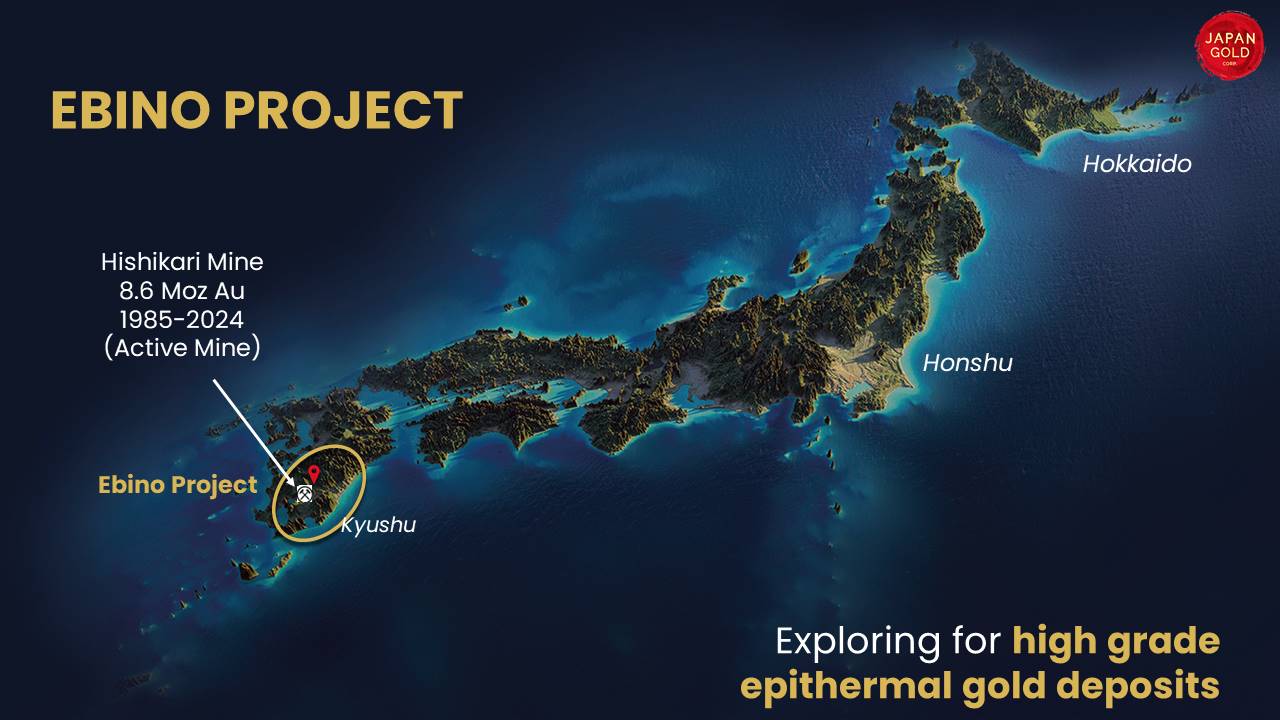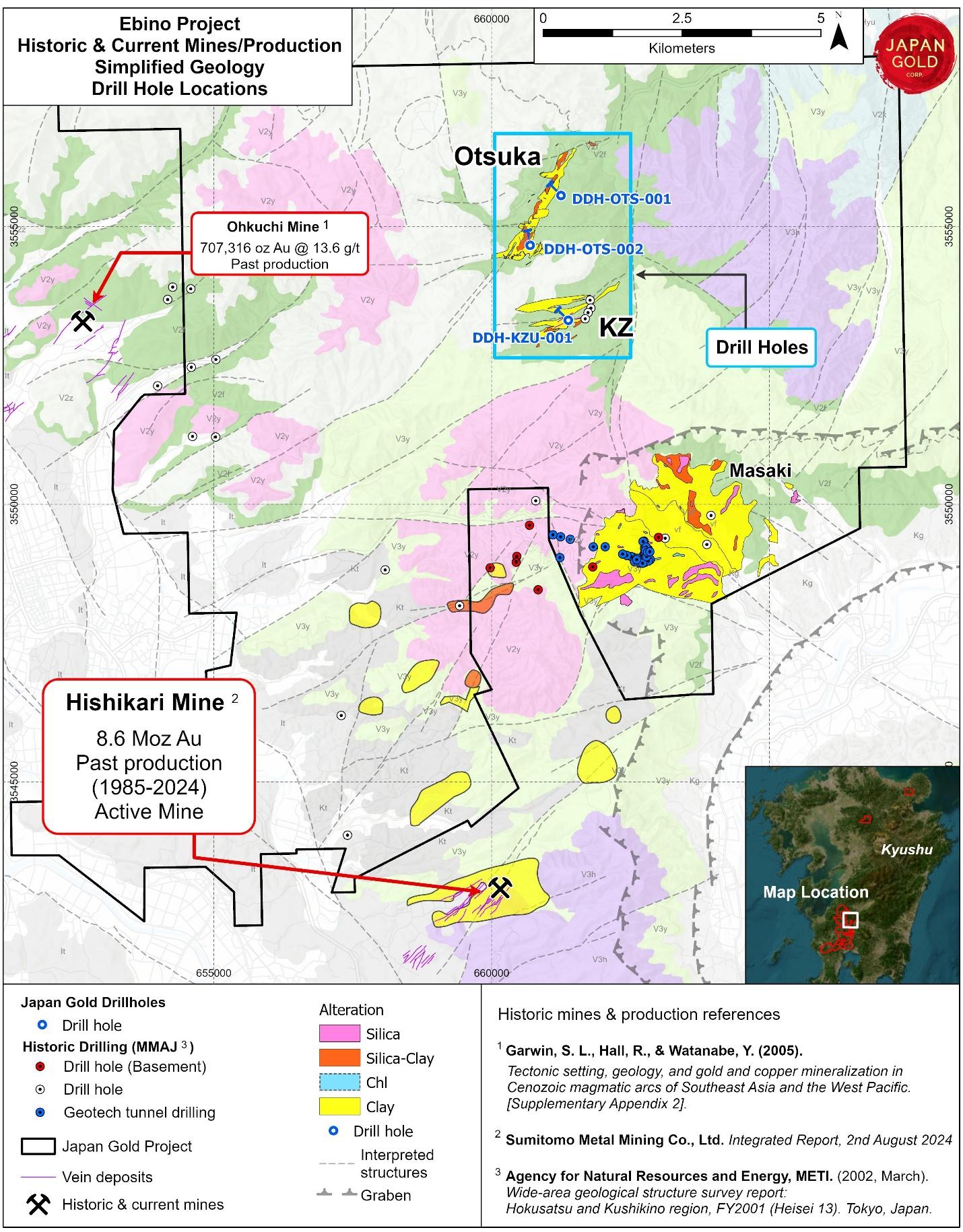The Ebino Project is located within the Hokusatsu district of the Southern Kyushu Epithermal Gold Province. The district contains Sumitomo Metal Mining Co., Ltd.'s, Hishikari Mine and three major historic gold mines, Kushikino, Yamagano and Ohkuchi. The Hishikari Mine, 9 million ounces of gold (8.6 Moz Au past production 1985-2024, 4.98 Moz Au reserves), is a concealed orebody discovered in 1981. Hishikari is one of the world's highest-grade gold mines and currently Japan's only active large-scale producing gold mine (Source: Sumitomo Metal Mining Co., LTD. Integrated Report, 2nd August 2024).
Ebino is located approximately 10km north of the Hishikari Mine and approximately 8km east of the historic Ohkuchi Mine. Historic exploration completed mainly by the Metal Mining Agency of Japan confirmed the presence of three distinct alteration areas - Otsuka, Kuwanoki-zuru (“KZ”) and Masaki (refer to Figure 1). Limited historic drilling has been undertaken within the alteration zones.
The Ebino Project is centred on an area of high-level epithermal alteration, characterised as discrete silica zones haloed by strong clay-pyrite alteration. Three distinct targets have been defined:
- Otsuka (2.5km x 0.5km)
- Kuwanoki-zuru “KZ” (2.0 km x 1.0km)
- Masaki (3.5km x 3.5km)
These targets are associated with high level alteration assemblages (Alunite + Kaolinite+ Dickite) and residual -vuggy silica. Anomalous pathfinders are coincident with the alteration. No significant Au anomalies have been identified to date.
The drilling program, totalling 1,528m tested targets at the Otsuka and KZ prospects for gold mineralization within a highly prospective and historically underexplored area. Drilling followed a program of target generation over the three alteration areas that included stream sediment, soil and rock chip sampling, mapping, ground magnetics and an IP survey.
Mapping at Otsuka and KZ confirmed an extensive alteration system, which is capped by volcanic material. The alteration system sits within a favourable NE and E-W structural corridor, spatially associated with rhyolite/dacitic domes and discrete gravity highs. The alteration system is comprised of smectite-illite clays.
Ground magnetic survey suggests the alteration area associated with Otsuka and KZ is greater than mapped, with a zone, 3 km x 3.6 km of magnetic destructive alteration centred over the two targets. In places, low level pathfinder soil geochemistry is present, including an extensive low level Hg soil anomaly (>0.5ppm Hg) covering the Otsuka and KZ alteration zones. Most of the Otsuka and KZ alteration zones have not been drill tested.
The Otsuka and KZ alteration and associated pathfinder anomalies may represent the upper levels of a low sulphidation epithermal system, with potential for veins developed at depth.
All three drillholes successfully intersected strong zones of hydrothermal clay alteration including structurally controlled kaolinite and dickite zones, characteristic of a shallow environment in an epithermal system. While the drilling did not intersect significant gold mineralization, the results are encouraging, as broad zones of alteration were intersected and can be used to help vector into potential epithermal targets within the vicinity of Ebino. The next phase of exploration will comprise additional target generation work within the Masaki, KZ and Otsuka alteration zones.
This first phase of drilling did not test the Masaki alteration zone as based on the work conducted to date, the Masaki alteration is interpreted to be high sulfidation related and requires further investigation. Work to define drill targets within the Masaki area is ongoing.
Figure 1 - Otsuka and KZ Drill Holes




